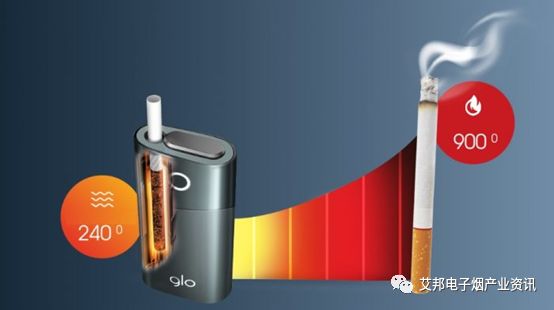Heating vape Technology and Insulation Materials for HNB Devices: A Comprehensive Analysis
With the rapid development of the heated tobacco product (HTP) market, the heating technology and insulation materials used in HNB devices have become a focal point in the industry. HNB devices generate heat through electrical heating, with temperatures reaching 300-350°C, significantly higher than the 200°C typically seen in traditional e-cigarettes. While this high-temperature heating method better roasts tobacco, it also leads to excessive surface temperatures, affecting user experience and even posing burn risks. Therefore, insulation technology is crucial in HNB devices.
This article will delve into the heating methods, insulation materials, and their applications in HNB devices, while analyzing future trends based on the current market landscape.
I. Heating Methods
HNB devices primarily use three heating methods: internal heating, external heating, and hybrid heating. Each method has its unique technical characteristics and applications.
1. Internal Heating

Internal heating generates heat inside the tobacco capsule using heating needles or plates. The heating area is relatively small, with heat concentrated within the tobacco chamber. The distance between the heating element and the chamber wall, along with the capsule’s design, helps reduce heat transfer to the device’s surface.
Representative Product: IQOS
IQOS employs thermal convection insulation, where cool air enters the chamber through upper ring slots during inhalation, carrying away some of the heat and reducing surface temperature.
2. External Heating

External heating directly applies heat to the outer surface of the tobacco capsule, making heat transfer to the device’s surface more likely. Therefore, external heating devices must use efficient insulation materials and technologies.
Representative Product: glo
glo utilizes vacuum tube insulation, reducing heat transfer through a vacuum environment to lower surface temperature.
3. Hybrid Heating
Hybrid heating combines the advantages of internal and external heating, using two independent heat sources for more thorough tobacco roasting. However, this method is structurally complex and requires advanced temperature control.
Representative Product: MOX-IOH
Shenzhen Luxinfeng Technology’s MOX-IOH is the world’s first HNB device with independent internal and external heating, combining needle-style internal heating with 360-degree external heating for higher efficiency and uniformity.

II. Surface Temperature Requirements
According to international standards, the surface temperature of HNB devices must be controlled within the following ranges to ensure user safety and comfort:
- Continuous Contact Areas:
- Metal materials: ≤48°C
- Plastic and wooden materials: ≤48°C
- Ceramic, glass, and stone materials: ≤48°C
- Short-Term Contact Areas:
- Metal materials: ≤51°C
- Plastic and wooden materials: ≤60°C
- Ceramic, glass, and stone materials: ≤56°C
To meet these requirements, HNB devices typically use direct insulation (insulation layers around the heating element) and indirect insulation (heat conduction to non-contact areas with high-radiation materials).
III. Insulation Materials
Insulation materials are critical for achieving surface temperature standards in HNB devices. Below are several common insulation materials and their applications:
1. Thermal Conduction Blocking Technology

1.1 Insulation Cotton
Insulation cotton (e.g., asbestos) is a low-cost porous material that insulates through air or inert gas within its pores. However, its poor high-temperature stability makes it unsuitable for HNB devices.
1.2 Aerogel
Aerogel is an ultra-light material with a nano-porous structure and extremely low thermal conductivity, making it one of the most effective insulation materials. Common types include SiO2 and Al2O3 aerogels, with maximum耐受 temperatures of 800°C and 1200°C, respectively.
Aerogel’s phase-change properties allow it to absorb and store heat, reducing external temperatures. Its thin-layer design is ideal for the精密结构 of HNB devices.
1.3 Vacuum Insulation Tubes
Vacuum insulation tubes reduce heat transfer through a双层结构和真空环境. However, their insulation effectiveness depends on vacuum quality, and their high cost limits widespread use.
1.4 Insulation Engineering Plastics

PEEK (polyether ether ketone) is a high-performance engineering plastic with excellent high-temperature resistance and insulation properties. With a melting point of 343°C and a continuous use temperature of 260°C, it is ideal for HNB device外壳, heating plate bases, and other components.
2. Thermal Radiation Blocking Technology
Thermal radiation blocking uses reflective materials (e.g., aluminum foil, metal-coated polyester films) to reflect heat back into the heating chamber, reducing heat transfer. Multi-layer reflective screens and蜂窝多孔结构 further enhance insulation.
IV. Market Status and Future Trends
According to Research and Markets, the global HNB market reached $21.5 billion in 2023. As consumer demand for HNB products grows, innovations in heating technology and insulation materials will be key drivers of industry development.
Future trends in HNB devices include:

- More Efficient Heating Technologies: Such as hybrid heating and intelligent temperature control systems.
- New Insulation Materials: Wider adoption of aerogels and nano-insulation coatings.
- Lightweight Designs: Optimizing structures and materials to reduce device weight and size.
Discover more from Ameca-mall
Subscribe to get the latest posts sent to your email.

